Staff and PhD students
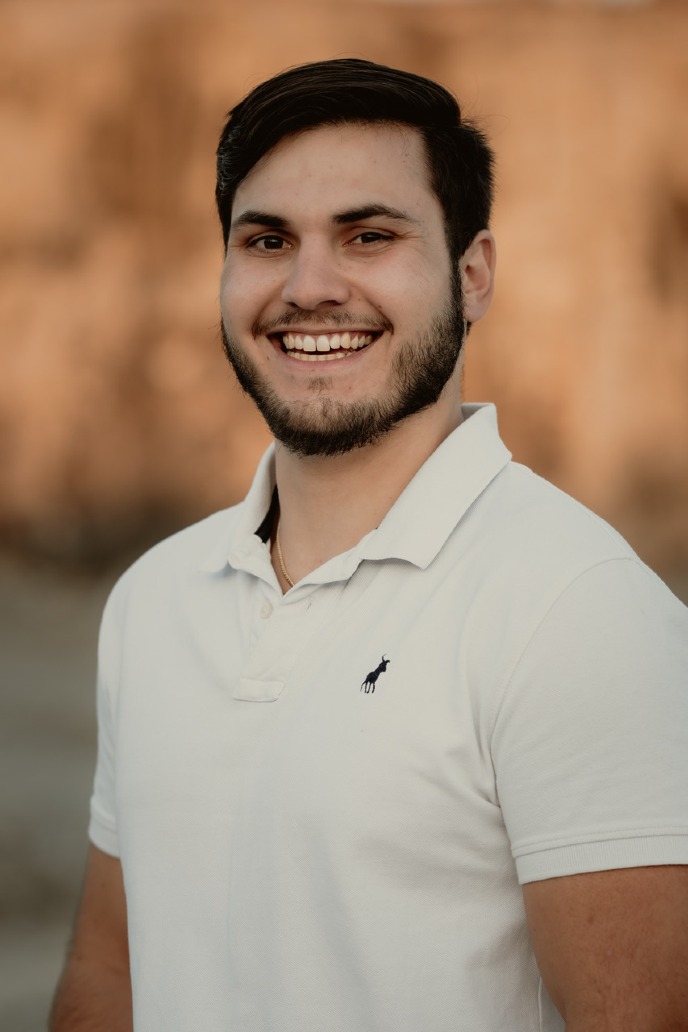
Cole Onorati - Aerosol Jet Printing and its applications towards wearable sensor systems
Cole is a master’s student pursuing a degree in Biomedical Engineering with a specialization in Medical Device Design. He has joined the group as an employed Research Engineer and to complete his master’s thesis which will focus on Aerosol Jet Printing and its applications towards wearable sensor systems. Specifically, his research will explore the adaptation and use of printable, wearable tattoo sensors made from conductive inks to monitor EMG, ECG, cortisol levels, and intravenous or ventilation flow phenomena.
Cole brings substantial expertise to this field through academic coursework on bio-signal acquisition and analysis, as well as practical experience gained during an internship at Philips. There, he applied human motion analysis to replicate human-like movement in a six-degree-of-freedom robotic system. In 2023, Cole completed his bachelor’s thesis with a focus on sensorized insoles for gait monitoring. This project utilized piezocapacitive sensors and IMU technology to extract spatiotemporal gait parameters, yielding scientifically relevant results.
During his time with the research unit, Cole will also collaborate with Prof. A.G.P. Kottapalli to publish the findings from his bachelor’s thesis as well as insights from the collective sensorized insoles projects.
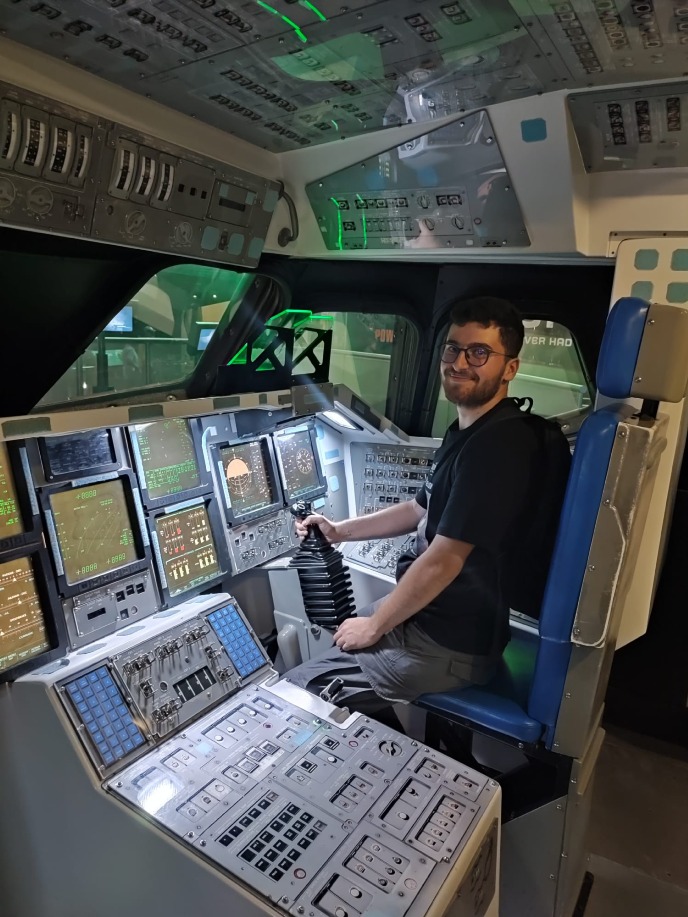
MSc Kliment Mladenoski - self-recalibration of a MEMS flow sensor
Kliment is an EngD candidate in Autonomous Systems, focusing on the self-recalibration of a MEMS flow sensor developed by Sencilia B.V. He earned his master's degree in Mechanical Engineering – Advanced Instrumentation at the University of Groningen. For his research project, he worked on developing an IV infusion system.
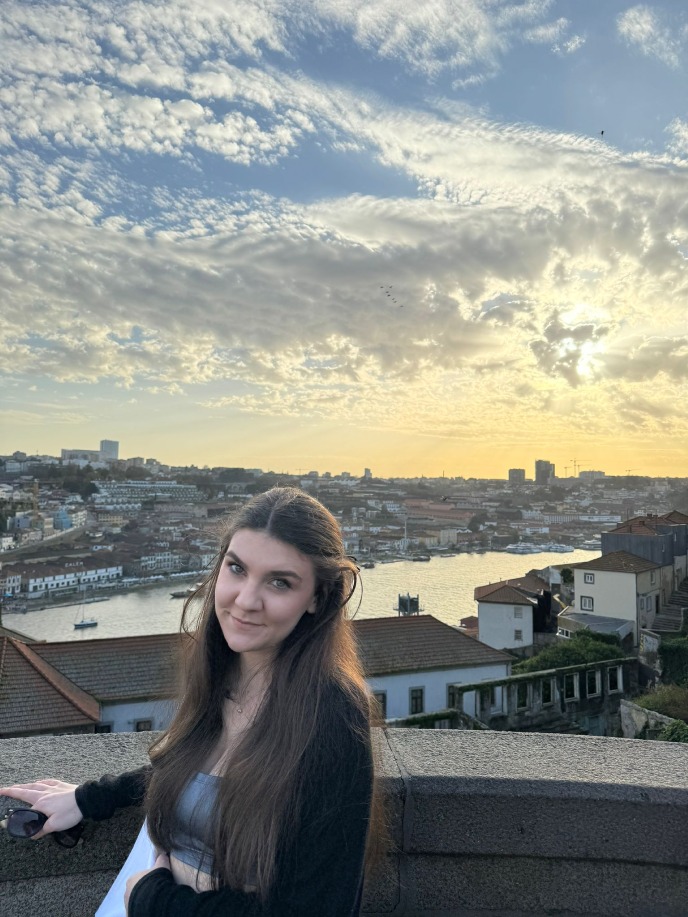
MSc Tijana Kostovska - Printed electronics and flexible, wearable sensor technology
Tijana is pursuing a PhD focused on the development of thin, printed, and flexible electronic sensors, as well as their integration into wearable systems. She completed her master’s degree in Mechanical Engineering – Advanced Instrumentation at the University of Groningen. During her master’s studies, she worked on ultraconformable tattoo electrodes for EMG monitoring.
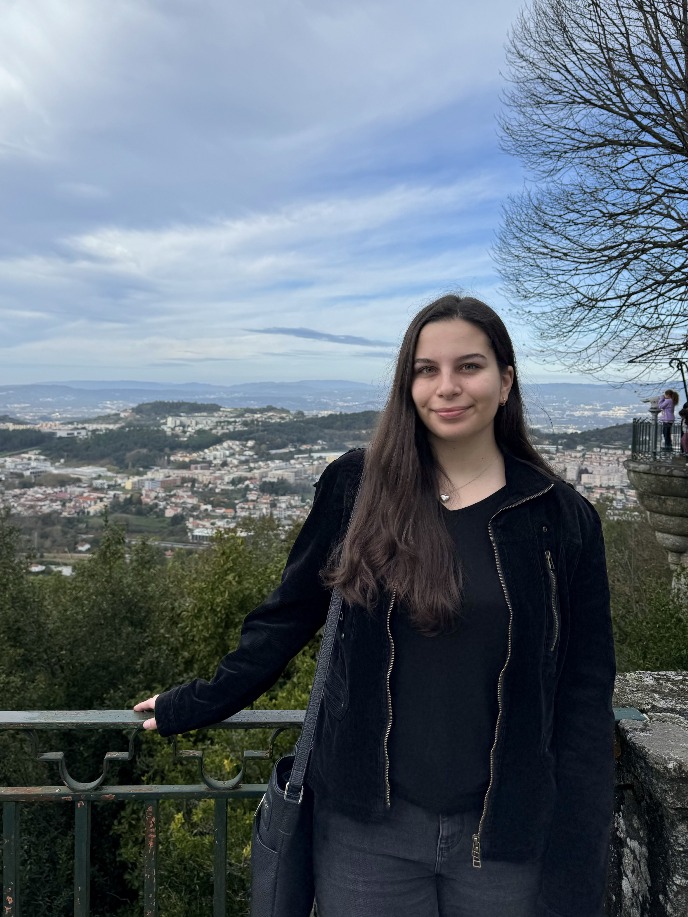
Alexandra-Elena Persicanu - Wearable electrochemical sensors for physiological function monitoring
Alexandra-Elena Persicanu is a Ph.D. candidate involved in the ERC project, focusing on the development of electrochemical sensors for physiological monitoring, with an emphasis on wearable applications. Her research integrates fields such as materials science, electronics, and biochemistry to create innovative solutions for non-invasive health monitoring. Prior to this, she completed her master’s degree in Biomedical Engineering at the University of Groningen, specializing in Medical Device Design. During her master’s project, Alexandra worked on the design of a wearable cortisol sensor for monitoring stress levels through sweat analysis.
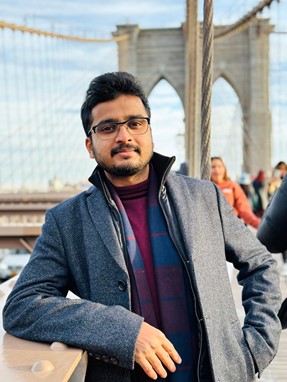
Dr Gaurav Khandelwal - developing biodegradable conducting materials in different form factors like fibre and films and their mechanical, morphological and electrical characterisation.
Dr Khandelwal is a postdoctoral researcher at BMBD, where his research is focussed on the development of sustainable conducting materials for responsible electronics including energy harvesting and sensors.
Dr Khandelwal has strong expertise in the development of various materials including nanomaterials, MOFs, peptides, 2D materials and biodegradable materials for energy devices and sensors. He completed his PhD with an award of excellence from Jeju National University, South Korea, where he is a recipient of BK21 fellowship. Before joining BMBD Dr Khandelwal was Research Associate at University of Glasgow, UK. He also worked as a Project Associate (pre-doctoral) at Indian Institute of Technology-Delhi, India. During his masters internship from Institute of Nano Science and Technology (INST), India, he explored peptide-based nanomaterials for drug delivery applications. Dr Khandelwal is an active member of Royal Society of Chemistry (MRSC) and a reviewer for high quality journals including chemical engineering journal, Nano energy, nature communications, applied energy etc. Dr Khandelwal has published more than 50 journal articles and 8 book chapters.
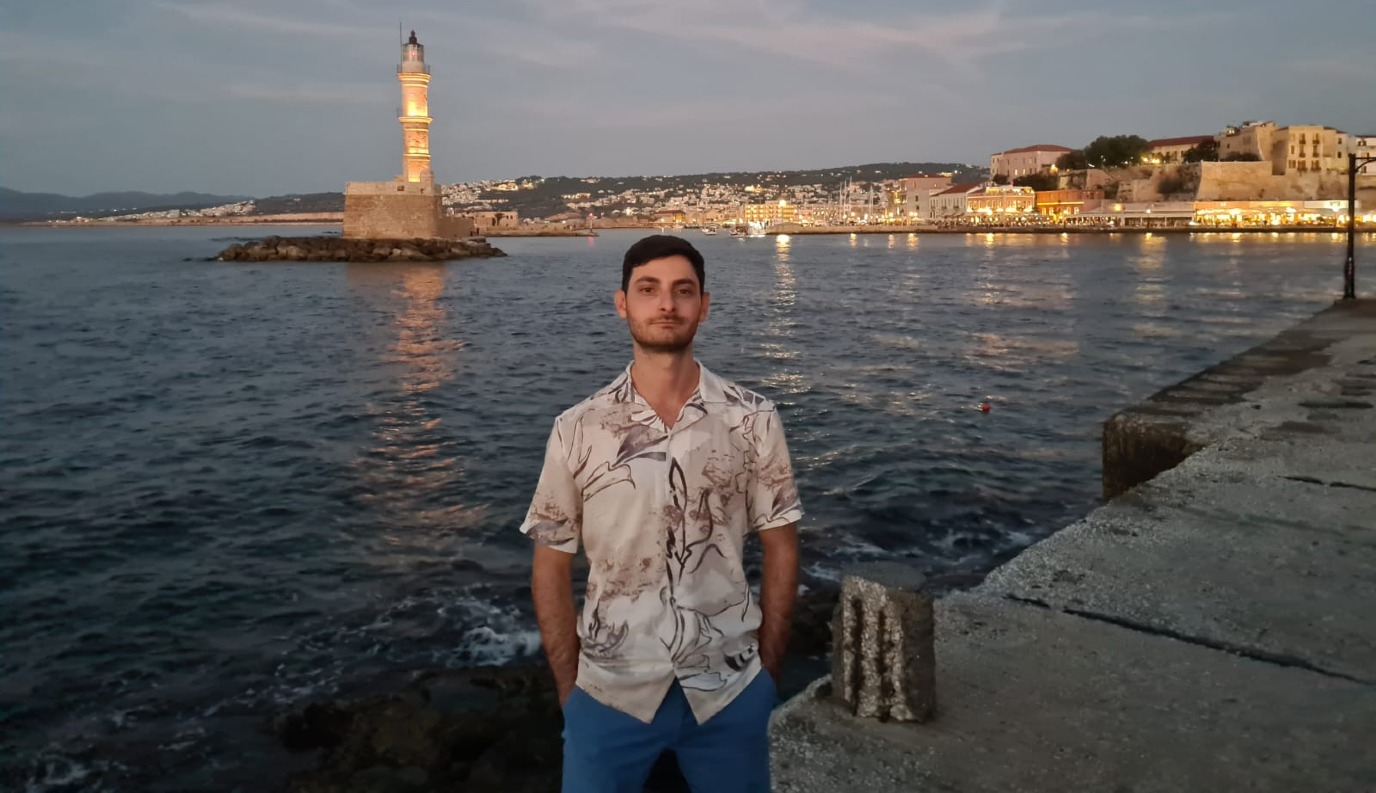
Dr Ioannis Spanos – Integrating mechanical metamaterials and flexible electronic sensors into functional grippers, targeted towards applications in the agricultural sector.
As a postdoctoral researcher, Ioannis is part of the BMBD and CMME research units. His research revolves around the design, characterization and fabrication of mechanical metamaterials and flexible electronic sensors, with the overarching objective of integrating them together into functional devices for use in the agricultural sector, under the scope of the DigiAgro3 project.
Ioannis has a strong background in metamaterials and additive manufacturing methods across different length scales. He completed his DPhil studies at the University of Oxford, where he investigated electromagnetic metamaterials in the MHz and GHz regimes using a combination of analytic, numerical and experimental methods. During his Master’s at the University of Crete, and in collaboration with the Foundation for Research and Technology, he investigated mechanical metamaterials in the microscale using multiphoton lithography.

Chinmay Gupta - Soft actuators and their integration with Seal whisker actuation mechanisms.
Chinmay has joined the ERC starting grant Project as a Ph.D. candidate. Currently, he is engaged in research concerning soft actuators and their integration with Seal whisker actuation mechanisms. Prior to this, he completed his master’s degree in biomedical engineering at the Indian Institute of Technology, Delhi. During his master's studies, he specialized in developing electrochemical sensors tailored for the detection of cortisol, a stress hormone.

Engincan Tekin - Modeling and characterization of sensing elements concerning mechanical and material aspects.
As a Ph.D. student, Engincan Tekin is doing research within micro-electro-mechanical systems (MEMS), focusing on the modeling and characterization of sensing elements concerning mechanical and material aspects. During his Master's studies, he developed a rotary actuator for a capsule endoscopy environment. With a particular emphasis on piezoresistive sensing, Engincan is currently involved in the ERC project 'Investigation of biological seal whiskers to create artificial whisker sensors for underwater robots (SEALSENSE),' where he contributes to the development of an underwater flow sensor.

Ishu Aggarwal - Cilia and stereocilia systems within humans and other organisms, morphology-functionality relations and mechanics
Cilia and stereocilia are nano to micro-scale thin cylindrical structures in many living beings responsible for sensing, transport, and manipulation such as stereocilia in the human inner ear for sensing sound, flow sensors in fish and frogs, cilia in human embryos for left-right asymmetry, metachronal cilia in human lungs for lung clearance, and many more. These can be active and passive in their functionality. In his PhD projects, Ishu is working with both active and passive cilia.
The bigger vision of Ishu's PhD is to understand their mechanics and morphology-functionality relations, and then try to develop bio-mimetic or bio-inspired devices. For this, Ishu uses an engineering strategy that uses theoretical and experimental methods. Ishu is using finite element method and fluid-structure interaction to gain theoretical insights. For active cilia systems such as embryonic nodal flow and metachronal waves, this PhD student is designing magnetically actuated artificial bio-mimetic systems and simulating those for fluid-structure interaction using our in-house solver. Similarly, for passive cilia systems such as stereocilia in the human inner ear and fish flow sensor, Ishu studies morpological and functionality relations of the stereocilia bundles using commercially available multi-physics finite element-based software like COMSOL.
Along with theoretical and conceptual validation, the team performs experiments by fabricating piezoelectric/magnetic material-based NEMS/MEMS systems that may further be fine-tuned and proto-typed to develop bio-mimetic sensors and soft robots for medical applications such as drug delivery, non-invasive surgery, etc.
About: Ishu Aggarwal is a mechanical engineer with a specialization in continuum and non-continuum mechanics. He is currently on his 3rd year PhD studies at BMBD research unit, ENTEG.

Diego Guzman Embus - Piezocapacitive and piezoresistive sensors for integrating them into flexible electronic skin to achieve soft and modulated grasping in grippers based on metamaterials.
Diego Guzman is a former PhD student at the University of Groningen, who developed his project in BMBD and CMME research units. Currently Diego is preparing for his thesis defence to take place in the summer 2025. Diego obtained his master's degree in physics at the Universidad Nacional De Colombia, Manizales, focusing on detecting and interacting DNA with ZnO nanoparticles using Raman Spectroscopy.

Dr Debarun Sengupta - Interfacing biomimetics and nanomaterials for next generation wearables
A major focus of Dr Sengupta's PhD research has been to research and develop various inkjet and 3D-printable flexible and wearable organic piezoelectric, piezoresistive, and piezo-capacitive sensors for human motion and remote healthcare monitoring applications. To develop various sensors for healthcare monitoring and biomedical applications, Dr Sengupta derives inspiration from nature and apply them to solving contemporary real-life problems. Dr Sengupta combines biomimetics engineering with state-of-the-art micro/nano-fabrication techniques to create sophisticated sensors targeted for human physiological monitoring and flow sensing applications."

Dr Debarun Sengupta worked as a Postdoctoral Researcher at the Engineering and Technology Institute Groningen, University of Groningen where he was involved with a Dutch Research Council (NWO) funded project titled "Swarm collaborative Multi-Agent cybeR physical sysTems with shAred sensinG modalitiEs, 5G commuNication and micro-elecTromechanical Sensor arrays (SMART-AGENTS)". He also taught an undergraduate course titled Nanoscience and Nanotechnology. He holds a PhD in MEMS/NEMS from the University of Groningen and an MEngSc in Electrical Engineering from the University of New South Wales, Sydney.
| Last modified: | 06 February 2025 4.08 p.m. |
